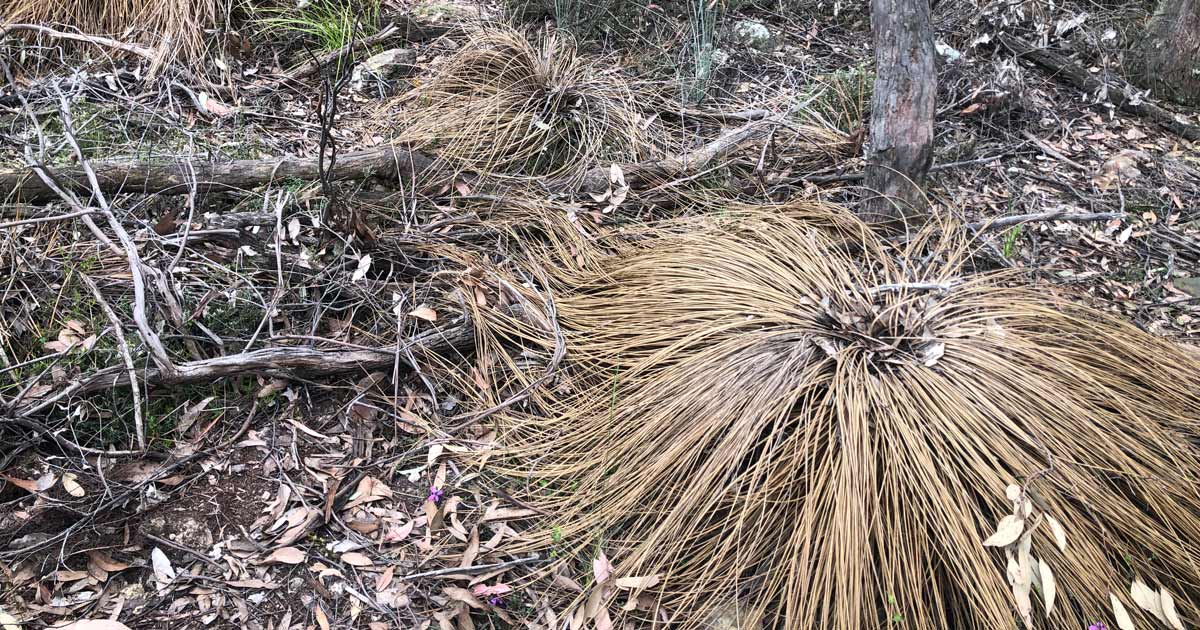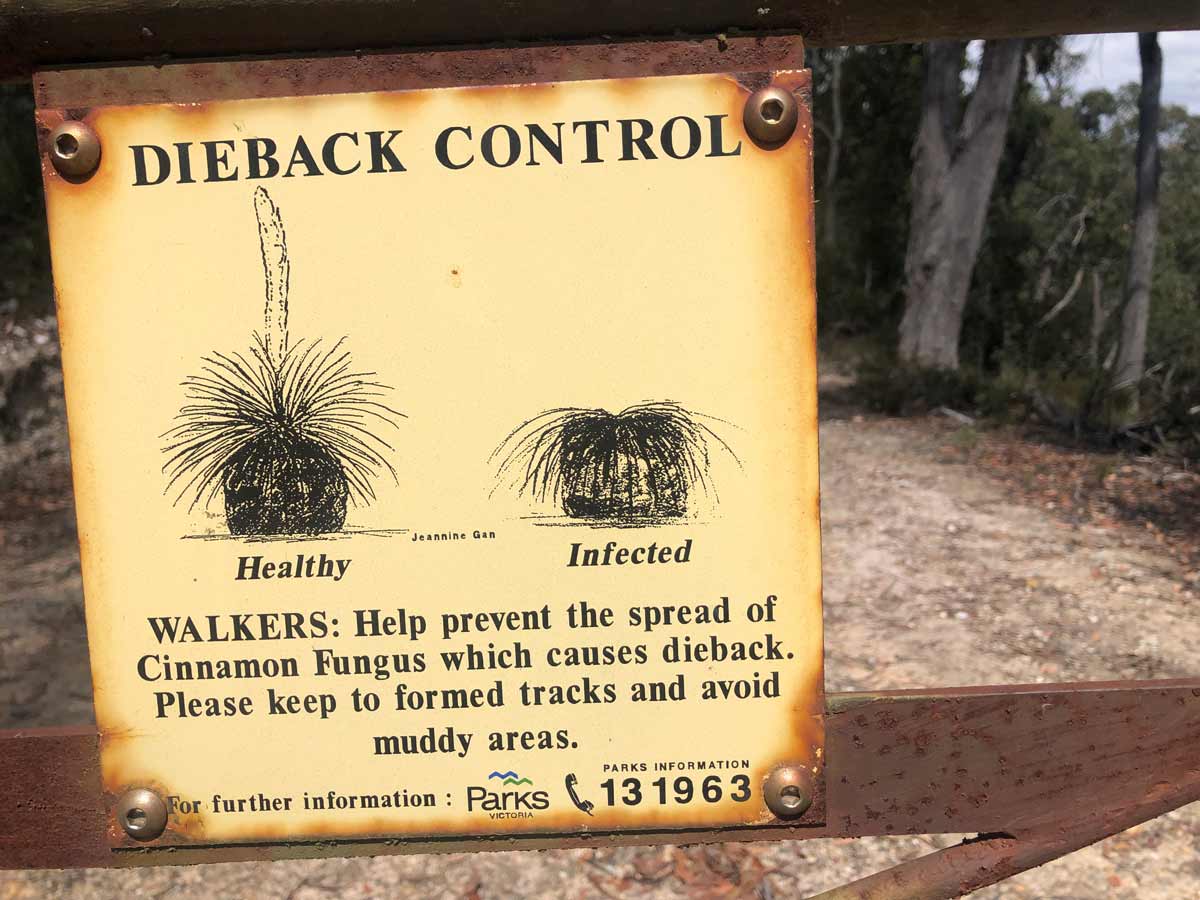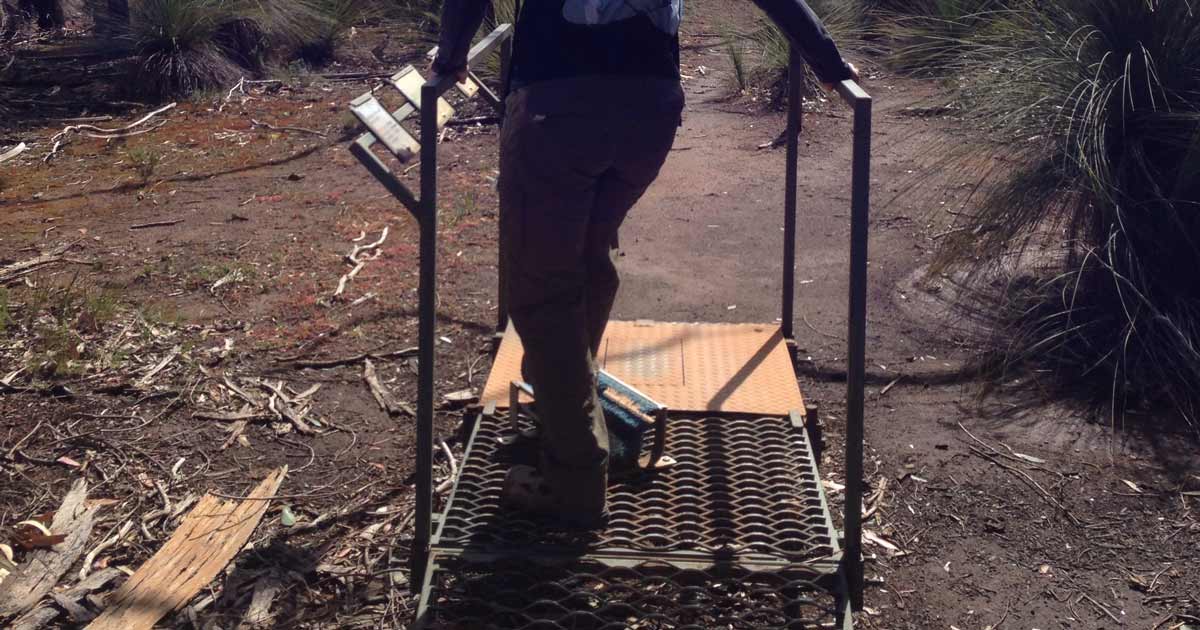Silent threat in the soil: Understanding Phytophthora cinnamomi
Beneath the seemingly lush beauty of the Australian bush lurks a hidden adversary: Phytophthora cinnamomi, (commonly referred to as Cinnamon fungus, though this term is not scientifically accurate). Phytophthora cinnamomi is also known by the names root rot, jarrah dieback and wildflower dieback.
This microscopic menace isn’t a true fungus, but a mold known for its destructive impact that is responsible for the dieback and death of over 900 native plant species. This “silent killer” doesn’t roar or pounce, but its insidious presence slowly strangles the life from roots, leaving behind a ghostly trail of dead and dying vegetation. Banksias become bleached remnants, grass trees reduced to skeletal silhouettes. Many different species of plants are affected by the dieback, however plants from the heath (Ericaceae), pea flower (Fabaceae) banksia (Proteaceous) and grass tree (Xanthorrhoeaceae) families are particularly susceptible.

Phytophthora cinnamomi thrives in warm, moist conditions, making the south coast particularly vulnerable. Its impact extends beyond majestic trees, threatening the very fabric of the ecosystem. Honey possums and honeyeaters, relying on nectar from these precious flora, face a dwindling food source. The most unsettling aspect is its ability to remain unseen for years, revealing its devastation only when it’s too late.

However, despair is not inevitable
By understanding this stealthy threat and taking simple precautions, we can become protectors of our beloved bush. Here’s how:
Boot Hygiene Warriors: Before leaving any area known for dieback, meticulously clean your boots to remove clinging soil and debris. Remember, this seemingly harmless dirt can serve as a Trojan horse, unknowingly transporting the mold to new victims.
Trail Stewardship: Stick to designated trails, especially during wet weather. Wet soil acts as a superhighway for Phytophthora cinnamomi, and your responsible choices can protect pristine landscapes beyond. Every footstep counts in this silent battle. Remember, venturing off-trail not only risks spreading the mold but can also contribute to soil erosion, further damaging fragile ecosystems.
Gear Disinfection: Your post-adventure routine shouldn’t end with just boots. Hiking poles, camping equipment, even your backpack deserve thorough cleaning with an appropriate disinfectant. Consider it an invisible shield protecting both native plants and the future of the bush.
Knowledge is Power: Familiarise yourself with dieback hotspots and regulations in the areas you visit. Park websites and helpful rangers are your allies in this quest. With knowledge as our compass, we can navigate this fight effectively.
Be a Voice for the Voiceless: This isn’t just about clean boots; it’s about a silent battle for our precious ecosystems. Spread awareness, volunteer with conservation efforts, and advocate for stricter regulations. Your voice holds the power to echo through the bush, a rallying cry for the protection of native plants.
Remember, every action, from a thorough boot scrub to a shared post about dieback, contributes to a healthier future for our bush. Let’s become champions of conservation, guardians of the green, and together, outsmart the silent killer, one spore at a time.
The fate of the Australian bush rests in our boots, our voices, and our unwavering commitment to stopping Phytophthora cinnamomi in its tracks.

Additional tips
Leave No Trace: Dispose of any soil or plant material you bring in from outside designated areas. Remember, you’re not a souvenir collector for Phytophthora cinnamomi.
Respect the Barricades: Closed tracks and quarantined areas are not invitations; they’re vital lines of defense. Curiosity might kill the cat, but in this case, it could also harm endangered flora.
Muddy Mayhem? Say No Way: Avoid wet and muddy areas whenever possible. If crossing them is unavoidable, consider changing your route or, like a true champion, clean that mud off your boots before venturing onto dry ground.
Local Knowledge is Key: Don’t hesitate to ask. Park rangers are your allies with up-to-date information and alternative routes around dieback zones. Knowledge is our shield against this silent threat.
Additional threats: While footwear is a major culprit, Phytophthora cinnamomi can also spread through contaminated vehicles, machinery, and even infected plant material. Always avoid driving off-road or using equipment in areas known for dieback, and be mindful of transporting any vegetation without proper hygiene practices.
Additional resources: Visit the Australian Government website or contact your local park rangers for detailed information on dieback hotspots, regulations, and volunteer opportunities. Together, we can protect the rich tapestry of the Australian bush for generations to come.
By taking informed steps and embracing a shared commitment, we can outsmart the silent killer, one spore at a time. Lace up your boots, embrace your inner environmental hero, and let’s leave a legacy of vibrant ecosystems for generations to come.





